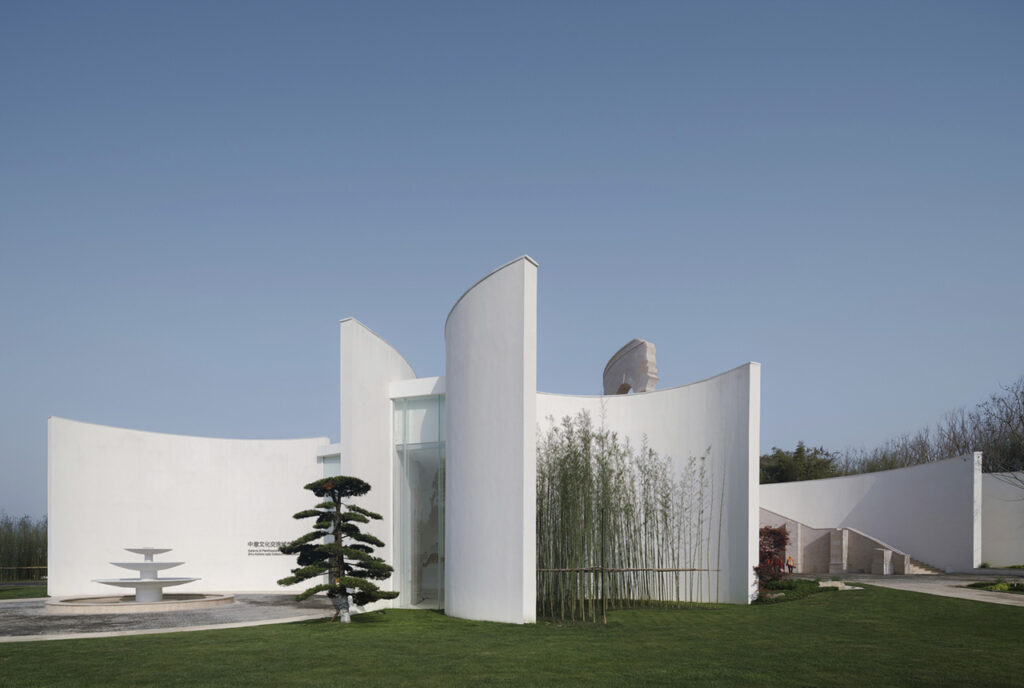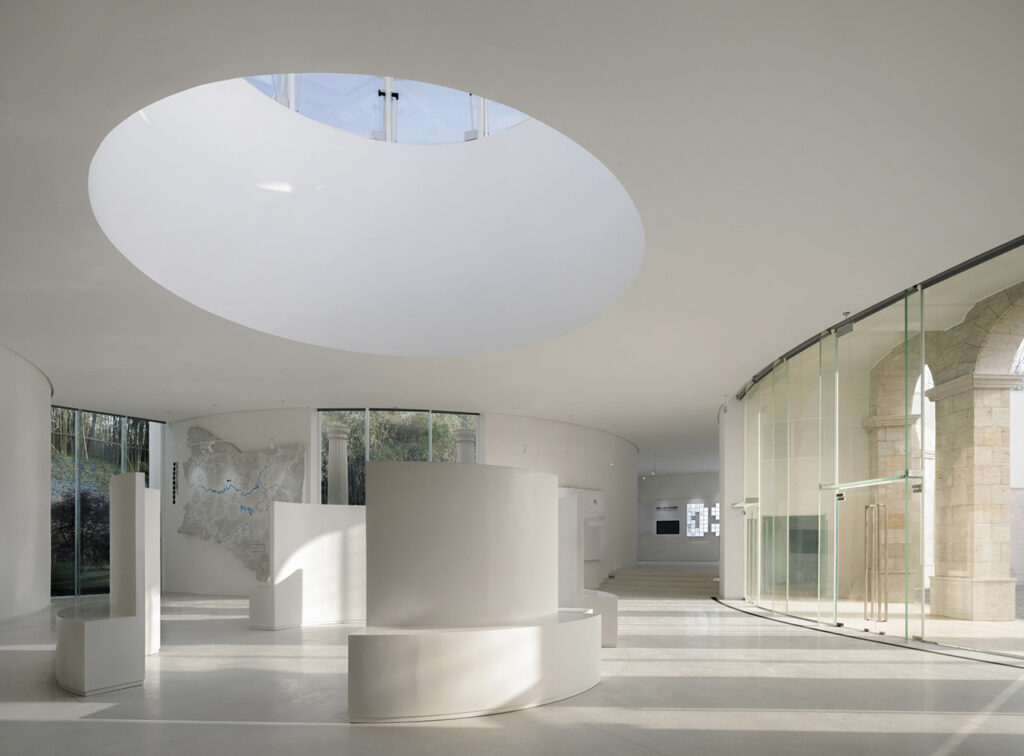No figure is more symbolic of Sino-Italian cultural exchange than Marco Polo. Today in China, his decade-long sojourn in the country is taught in schools; his name, synonymous with wanderlust and refinery, used to sell everything from luxury hotel rooms and language classes to auto parts and sausages.
Little wonder, then, the 13th century Venetian is cited as an inspiration for a recently opened Sino-Italian cultural center on the outskirts of Chengdu. The respect was mutual; as detailed in his travelogues, Marco Polo admired the Sichuanese capital, its thriving silk trade, and the architecture of its covered bridges. Seven centuries on, one wonders what the explorer would have made of a complex that fuses traditional Chinese pavilions with Roman architecture.

The Sino-Italian Cultural Exchange City Reception Center was constructed as part of an agreement between Chengdu and five countries. Image: aoe Architects
Culturally speaking, Chengdu has long been associated with opera, teahouses, and fiery cuisine. In 2017, local authorities sought to expand the city’s footprint and give it industrial heft by partnering with five international countries to build so-called “innovation parks” in Tianfu, a rapidly developing district. Four years on from the agreement signed in the presence of the Chinese and Italian presidents, the Sino-Italian Cultural Exchange City Reception Center is the first of such the projects to open.
The Center will serve as a local government base for hosting cross-cultural exhibitions and events with local residents free to explore the buildings and its tranquil grounds, all designed by Beijing-based firm aoe architects.
“We hoped to find the intersection of cultural differences between East and West,” says Larry Wen, Founder of aoe architects, “to allow visitors to enjoy Italian and Chinese culture at the same time and to experience the difference.”


The center represents Sino-Italian cultural exchange from its architecture that melds Chinese and Italian forms, to its eventual function as a site for cross-cultural events. Images: aoe Architects
aoe’s creation speaks to extensive research on Roman architecture. Continuous arches surround open plazas, columns, and domes are neatly integrated with curved white walls, and Roman travertine is used throughout. The pandemic may have curbed outbound Chinese travel, says Wen, noting the Center’s immediate popularity for wedding photo shoots, but it offers locals an authentic taste of something very different.
Another influence is Linpan settlement architecture, a style native to rural Sichuan in which buildings are immersed in deliberately planted vegetation. To enter the Chinese pavilion (complete with a courtyard and a tea room), visitors pass through a bamboo forest, encouraging a mind shift, Wen says, to a space that holds “a strong Chinese philosophy and a sense of beauty in a Chinese way.”
In discussing aoe’s inspiration while working on the project, Wen frequently turns to “ruyi,” a precious object often gifted to foreign dignitaries by Chinese counterparts as a sign of good relations — a value the Center most certainly embodies.



